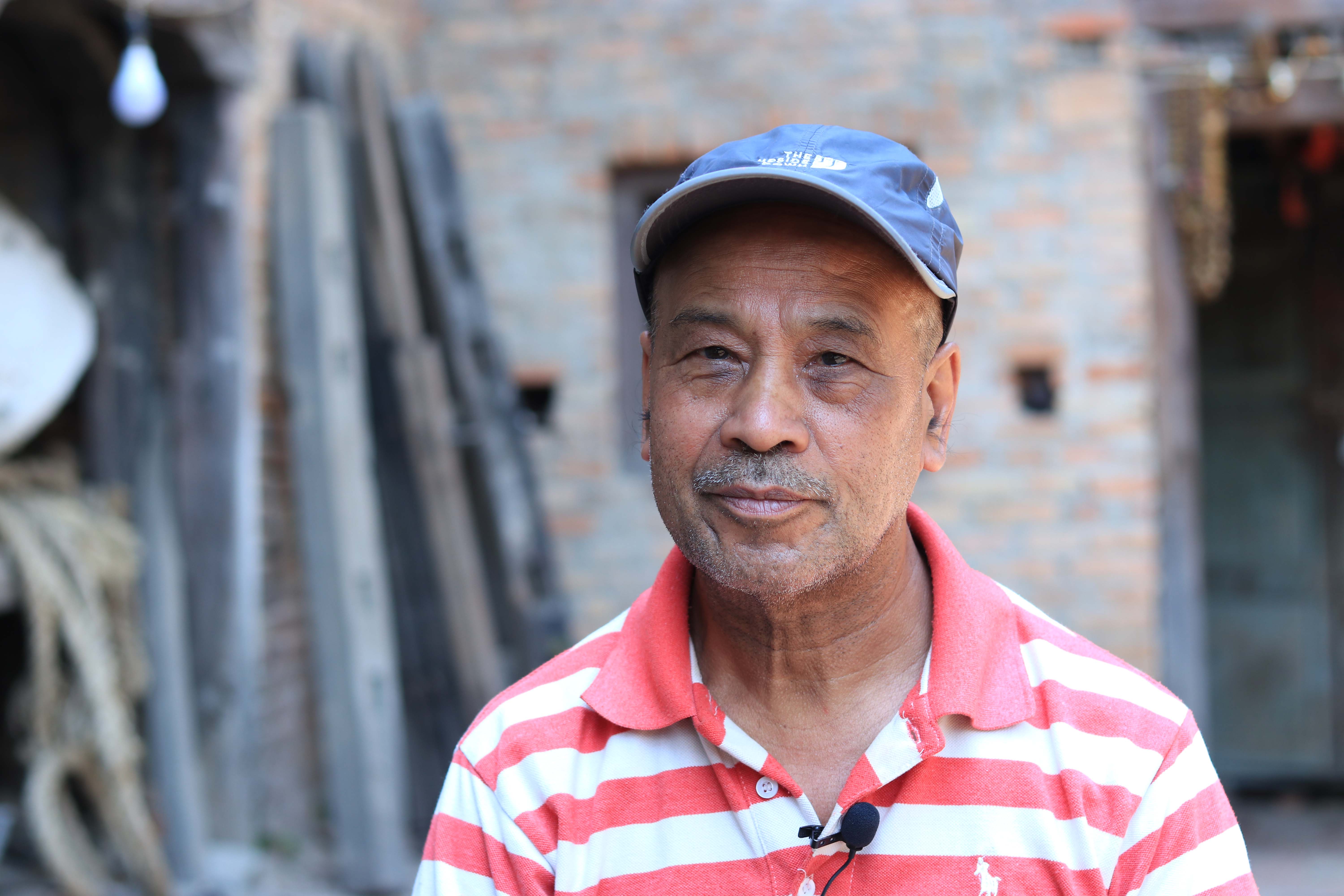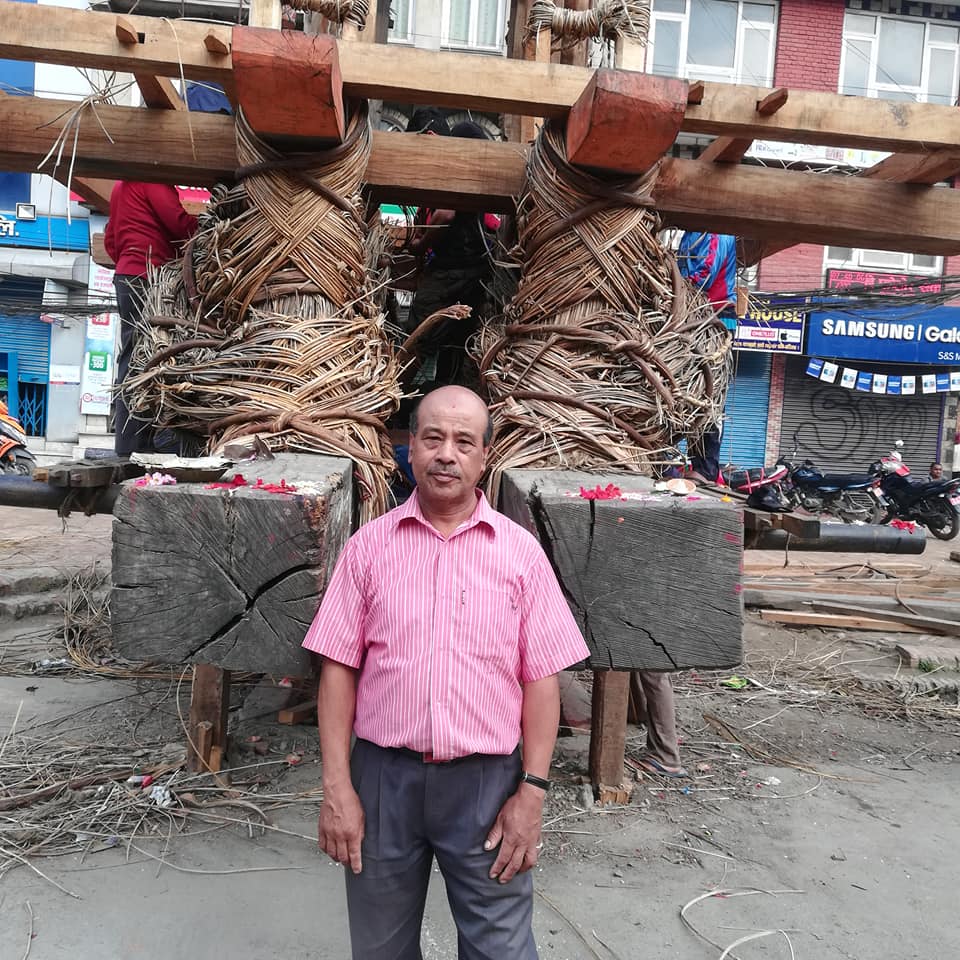Prestigious Jeonju International Award (JIAPICH) promotes Intangible Heritage from Lalitpur, Nepal
Among three finalists, the South Korean JIAPICH has honored Mr. Dil Kumar Barahi, the leader (naya) of the Barahi Da Guthi (association). This socio-religious association specializes on carpentry, precisely on the woodwork needed for the processional chariot of the Newar deity of Buṅgadyaḥ, also referred to as Lord Karuṇāmaya or, for Hindus, the Rāto (Red) Matsyendranātha. This prominent deity from the Kathmandu Valley is taken out for annual procession on the 10 meter high mobile temple that is reassembled in March/April each year, whereby Mr. Barahi and his association are responsible for the wooden structure and details of the architecture of the impressive wagon.
Every twelve years, the chariot is made anew, with the exception of the gilded parts attached to it. Mr. Barahi has literally devoted his whole life to this work, which entails the knowledge passed down from one generation to another. He has not only contributed in continuity of the traditional skills and practices but also is ensuring for future continuity by teaching younger generations within the Barahi community to smoothen wooden structures, make holes in the wood, for beginners and assemble the structure of this mobile chariot in which the deity gets pulled by devotees between his fixed residences in the Newar town of Bungamati and the ancient city of Patan. Of key importance thereby is Mr. Barahi’s commitment to keeping the vivid culture alive by teaching knowledge beyond manual skills, including ritual practice. The work of Mr. Barahi is thus a crucial contribution to the dynamic and festive intangible heritage of the Valley. The procession and the making of the chariot mirror the complex fabric of Newar society, their history, caste patterns, and spatial distribution across the Valley.
“Mr. Barahi has contributed immensely to our research on the role of inscriptions in alerting us to the role of particular groups in the procession, and how they collaborate and share knowledge to make this all happen,” says Dr. Monalisa Maharjan, who was trained in intangible heritage research in Portugal and currently works with researchers in the Nepal Heritage Documentation Project funded by the Arcadia Fund and based in Patan and Heidelberg. The intangible heritage is also recorded in manuscripts and inscriptions, some of which are hundreds of years old and either stored in temples or shrines or travelling with the chariot. Aligned to the documentation project is a research project called “the Anthropology of Inscriptions,” funded by the Flagship Initiative Transforming Cultural Heritage at Heidelberg University. With Mr. Barahi’s help, the researchers, Dr Monalisa Maharjan and Dr Nutandhar Sharma could identify many inscriptions including manuscripts and knowledge about the woodwork of the chariot. They enter the data into a free and open access database (https://danam.cats.uni-heidelberg.de/), with the support of Rajan Kathiwoda and Dr. Simon Cubelic.
NHDP is confident that with this international recognition of Mr. Barahi and his association’s work the often invisible work of the hands and lives working tirelessly and selflessly for several generations in enabling Nepal’s heritage to continue will be recognized further. Moreover, the aspiration is that such honoring of the practice and knowledge will contribute to encourage members of young generations of Nepalis to join in safeguarding those skills.
With the aim of safeguarding and promoting Intangible Cultural Heritage, Jeonju City in South Korea has been organizing international award since 2019. The award focuses on Living Human Treasurers (practitioners), groups, communities, administrators, researchers, NGOs and those who have made substantial contributions for promoting Intangible Cultural Heritage. As an honor for the contribution of individuals or organization each year the chosen three finalists will be distributed $30,000 USD among the finalists and a Plaque.





